There’s always something afoot in nature and journaling can encourage you to engage more with what you see
This is a guest post by Anisha Jayadevan.
A lot happens in the space between seeing or hearing a bird, and entering it as an observation on eBird. The Purple Sunbird that you saw carrying nesting material was more than just ‘PuSu (eBird shortcode for Purple Sunbird), nesting- check, female- check’. It may have been making repeated visits to your balcony, from the Champaca tree opposite your house, to pick strands of a spider web for its nest. You observed it, on a lazy, cloudy August afternoon, while the timer on your eBird app may or may not have been ticking away. Following the sunbird with your binoculars, you tried to locate its nest in the Champaca tree. You smiled to yourself at its high-pitched two-note call every time it flew towards the spider web. The nest was well hidden though, so you needed to go closer. You go closer to its nest— but not too close lest you spook it— and hang around casually, as you would to ogle a stranger’s garden from the road. Peeking under the tree, you notice the beginnings of a nest constructed with leaves and spider web.
Journaling can help you remember
There is always something afoot in nature, and a bird checklist may not capture the richness of these observations. Complementing your checklist with notes of what you see is a loving way to commit some of the drama you observed to memory, a way to remember those pesky superciliums and wing bars, a way to become familiar with an unidentifiable bird. Think of these notes as marginalia or footnotes to each observation. When you visit your notes later, they become portals into the past: invitations to remember a lovely fifteen minutes or more spent observing birds and nature.

You don’t have to be an artist to make useful and quick sketches of birds or other interesting observations. Ghazala Shahabuddin (L) and Swati Sidhu‘s (R) notes illustrate how quick drawings can be useful for unidentified birds.
There are different ways you can journal. Some people use a small field journal or their phone to note down their observations while birding. Others prefer making a mental note and taking a ‘memory-dump’ of it afterwards. Apart from the cardinal details of date, time and location, your field notes can be as detailed as a personal journal entry, or have bullet points of behaviours, interactions, and other observations of, say, flowering or fruiting trees and insects. A quick bird sketch is sometimes useful to highlight those pesky superciliums and wing bars.
Journaling can encourage you to be more attentive
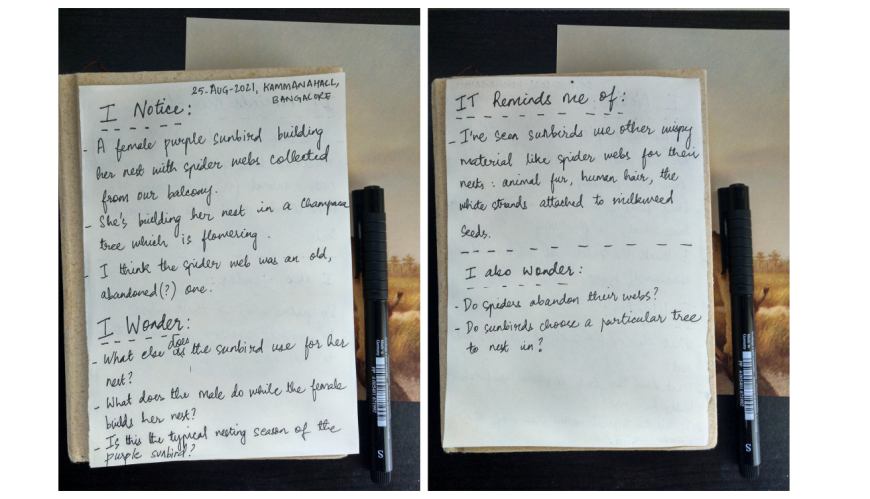
A popular journaling prompt is “I notice…. I wonder…. It reminds me of…”.
I notice: Describe the different species, interactions, behaviours or phenomena (such as tree flowering) you notice around you.
I wonder: give your curiosity free rein to ponder your observations. This can prompt you to do a little research to find some answers. It reminds me of: describe similar observations, events, sounds, etc. The call of an Ashy Prinia, for example, reminds me of a toy gun in a video game.
A popular journaling prompt that prods you into looking longer, noticing connections, and puzzling over what you see, is “I notice….”, “I wonder….”, and “it reminds me of….”. Engaging deeply with your observations in this way helps you connect dots and observe patterns that might not otherwise have occurred to you.
Adding observations and sketches to your eBird list
To nudge you into trying your hand at, or picking up your lost habit of journaling, Mittal Gala, P Jeganathan, and I asked a few people to share their field notes with us. Some of these notes were made before eBird was started; a few of these were added to eBird as historical observations. A few other inveterate journal-ers continue taking hand-written notes when they go birding, and sometimes upload field sketches to their eBird list. If hand-written lists feel too alien for you, eBird also has an option to add comments to your list or observation.
A leaf out of birders’ journals
Two birders on why they journal
“It was mandatory to write down the field notes on the spot since there were hardly any illustrated field guides in those days. And we did not have digital cameras to take photographs. Once the descriptions including the crude diagrams were done, it would take days to get the bird identified. There were few experts or the existence of the internet back then to answer my queries. I have, when I first started birding, taken months to identify a species because of this. But I guess this helped immensely since it meant you observe patiently and jot down as many details as possible.”
Ghazala Shahabuddin:
“Writing field notes is a habit I picked up early in life. I started birdwatching when I was in high school in the 1980s, a pre-internet era when birders in India depended just on a few field guides- Ali & Ripley and Collins. I soon realized that many birds were not easy to identify, given the considerable variation in plumage, as well as the difficulty of seeing a bird properly in the field. This was especially true when I visited new and unfamiliar locations. It was useful (and fun!) to carefully observe and write about birds I had seen- both visual descriptions, as well as their behaviour and inter-species interactions that sometimes turned out to be quite interesting. I usually write my field notes as a kind of travelogue. I include bird descriptions, ecological notes about the place I am visiting, local environmental issues I am concerned about and even [a description] about the people I travel with. Reading my field notes from various trips, evokes memories of not only the birds of the places I visited but also how and what I (and my traveling companions) experienced about those places at the time. Sometimes, I feel that electronic devices such as cameras and smartphones interfere with my observations of birds. So even now, I write rough field notes while birding. Later, back at home, I check bird IDs with the help of various books and websites, then transfer my lists to eBird, after which I write my detailed field notes for the day.”
Anisha Jayadevan is a PhD student who was inspired by this post to pick up her lost habit of journaling. She loves getting people excited about nature. She is currently pursuing her studies at the University of Maryland Baltimore County. She loves writing and spending time outdoors.
Header image: Abhisheka Krishnagopal’s notes from 2020.

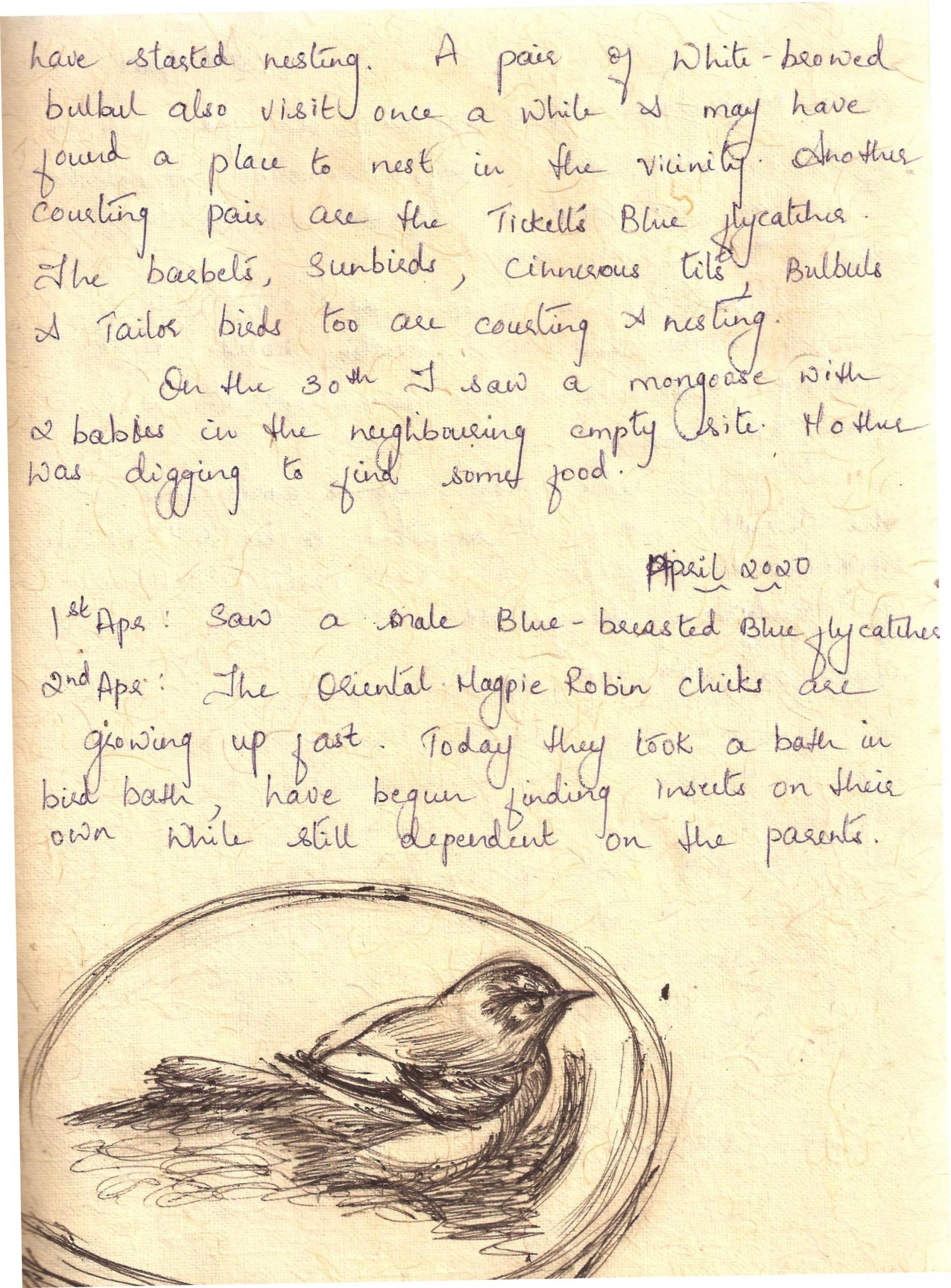
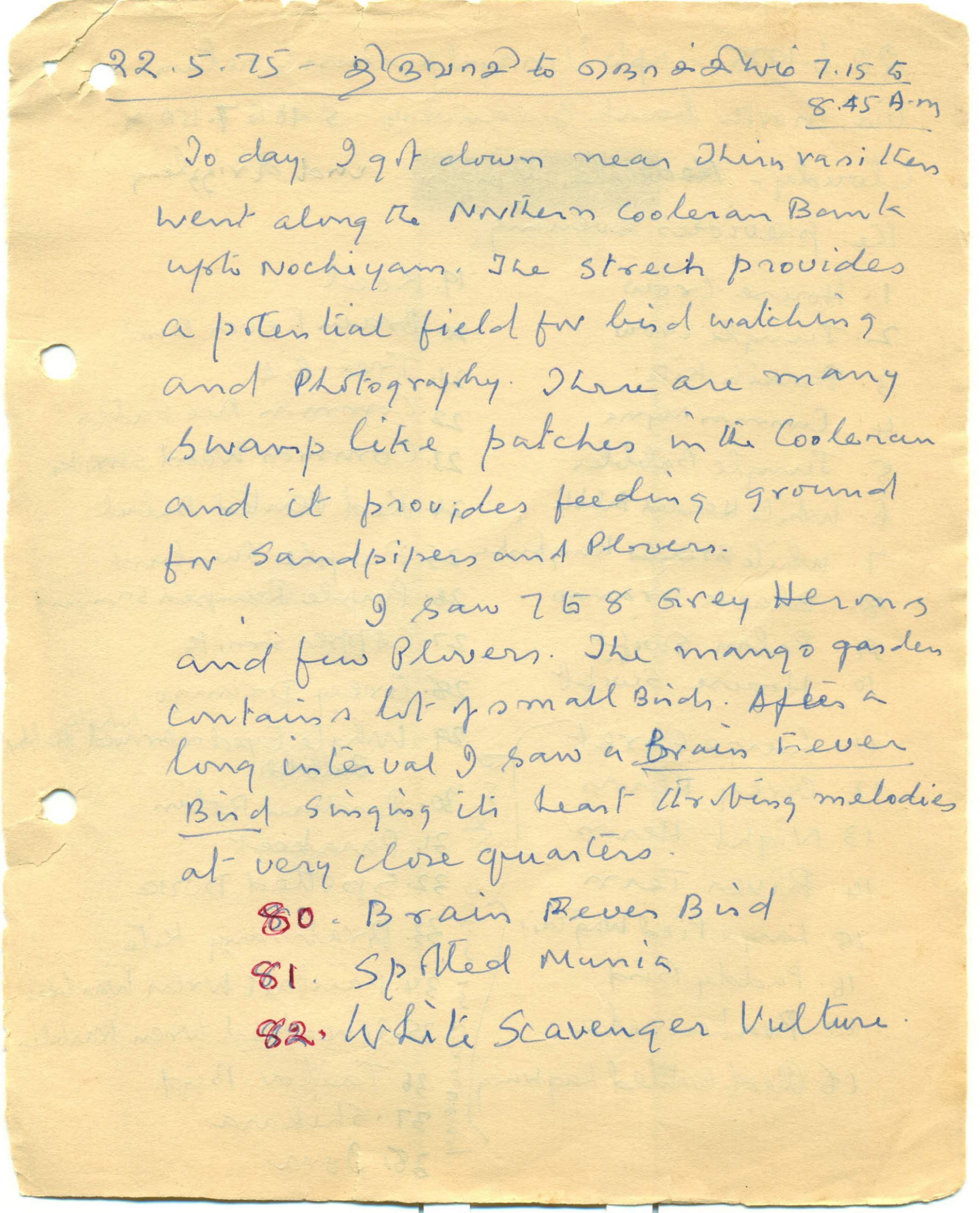


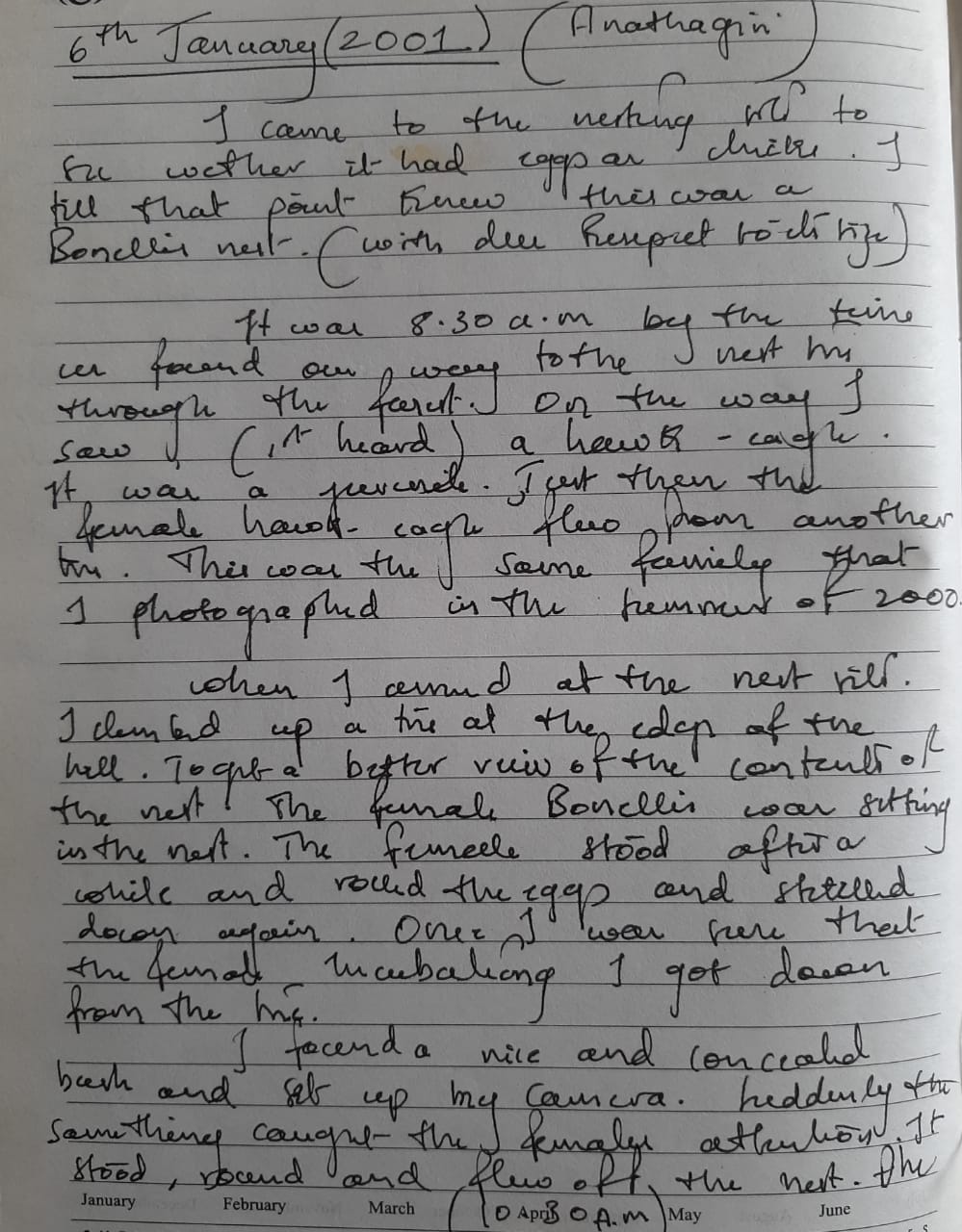

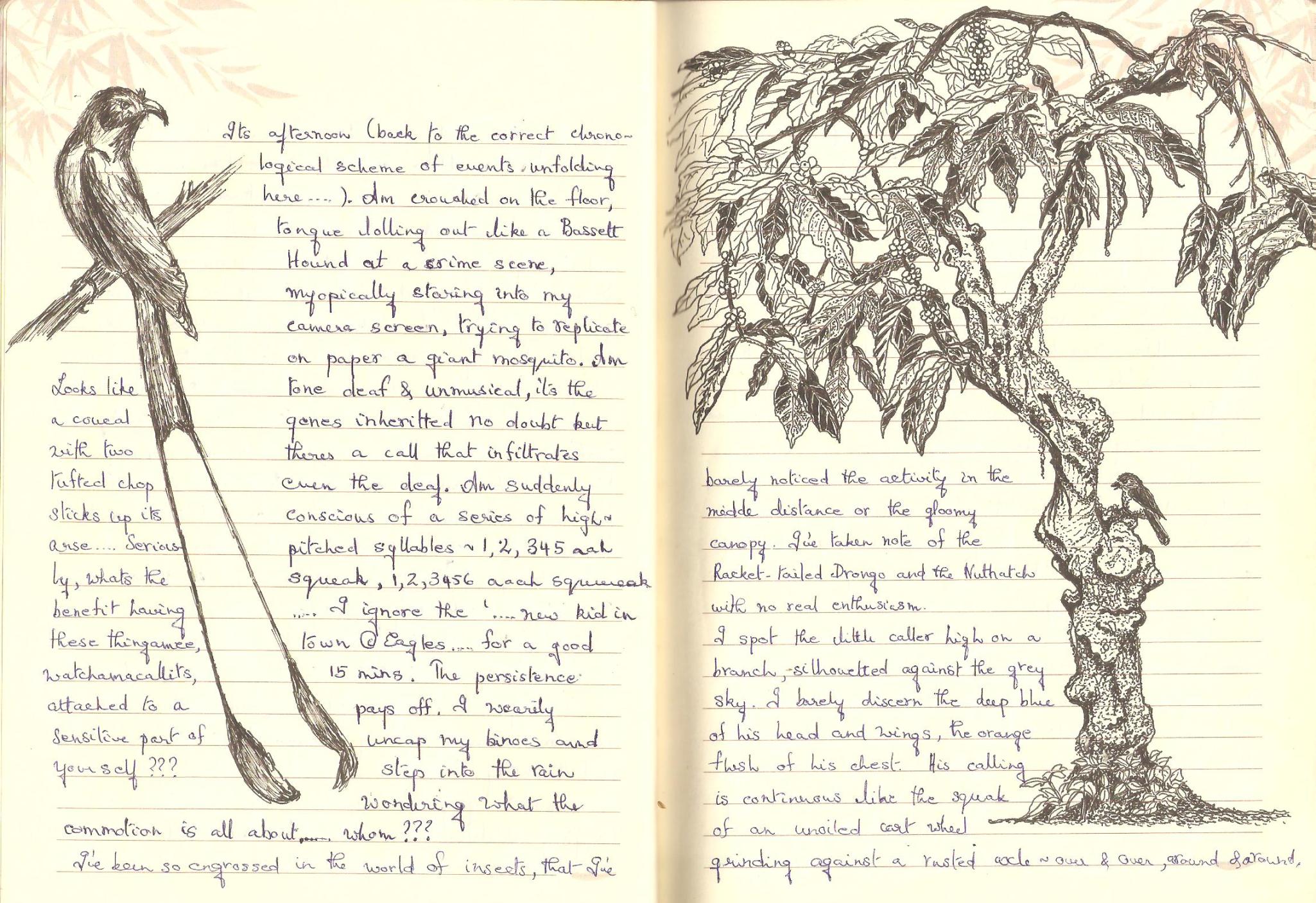



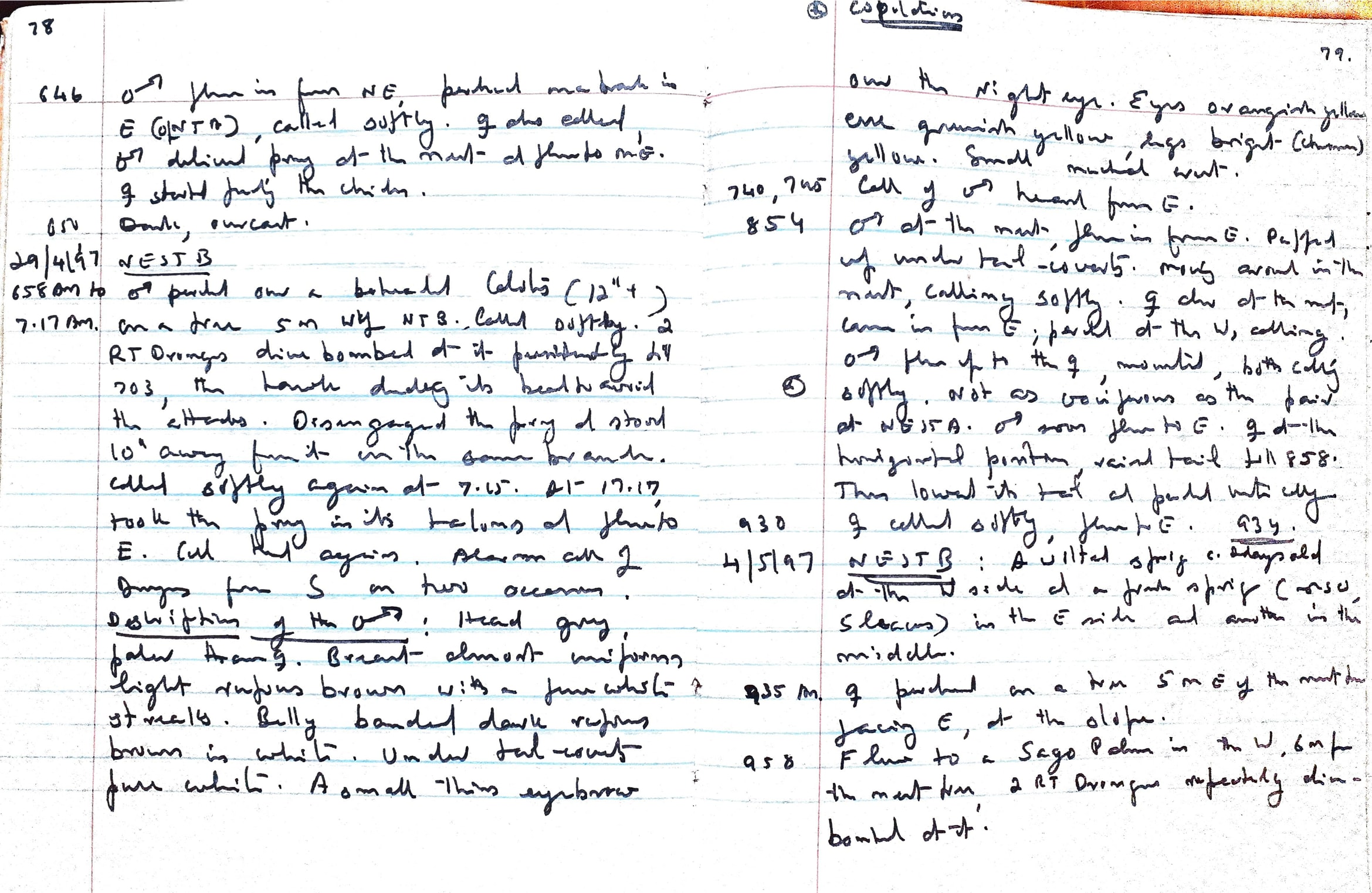
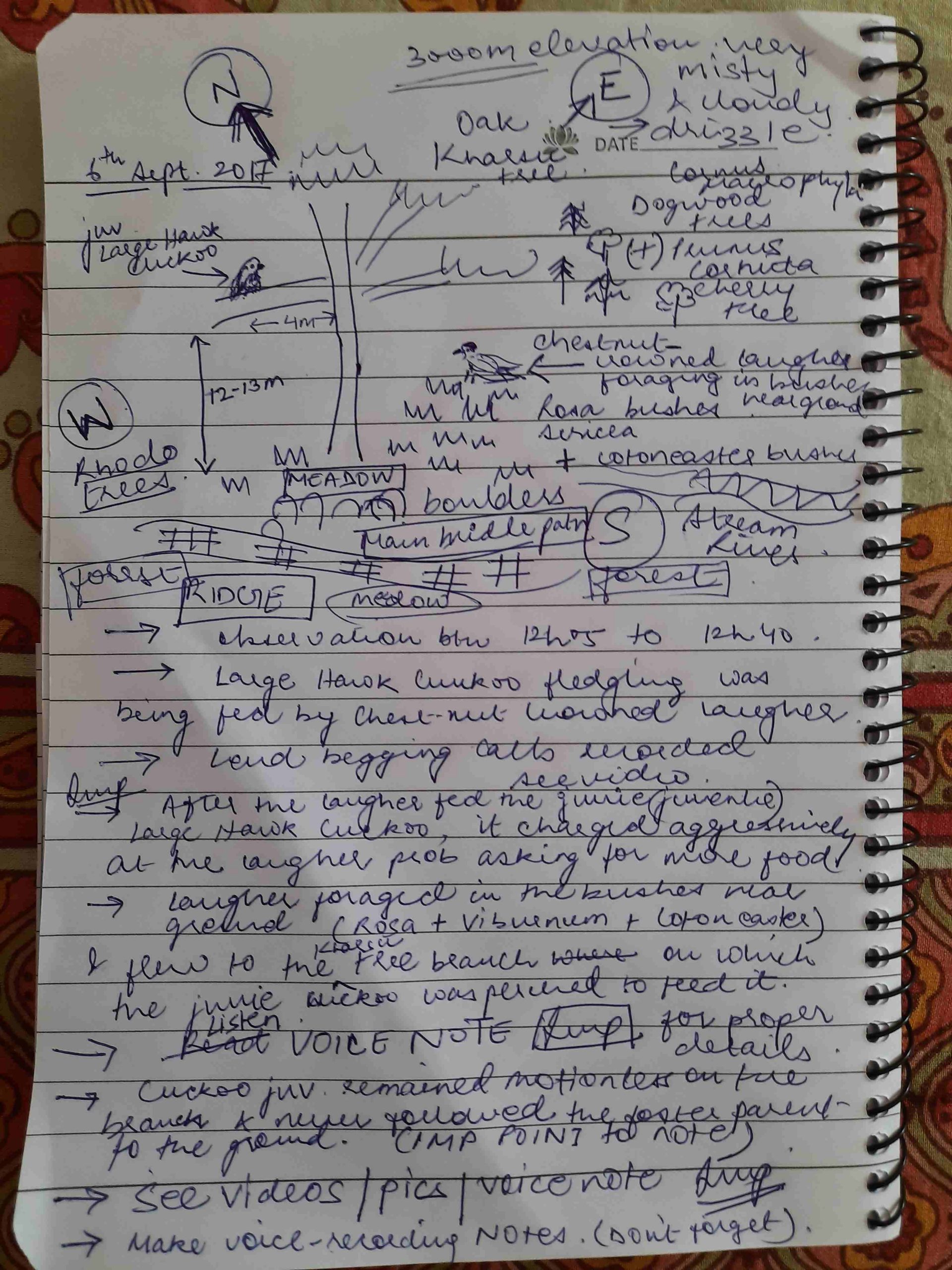

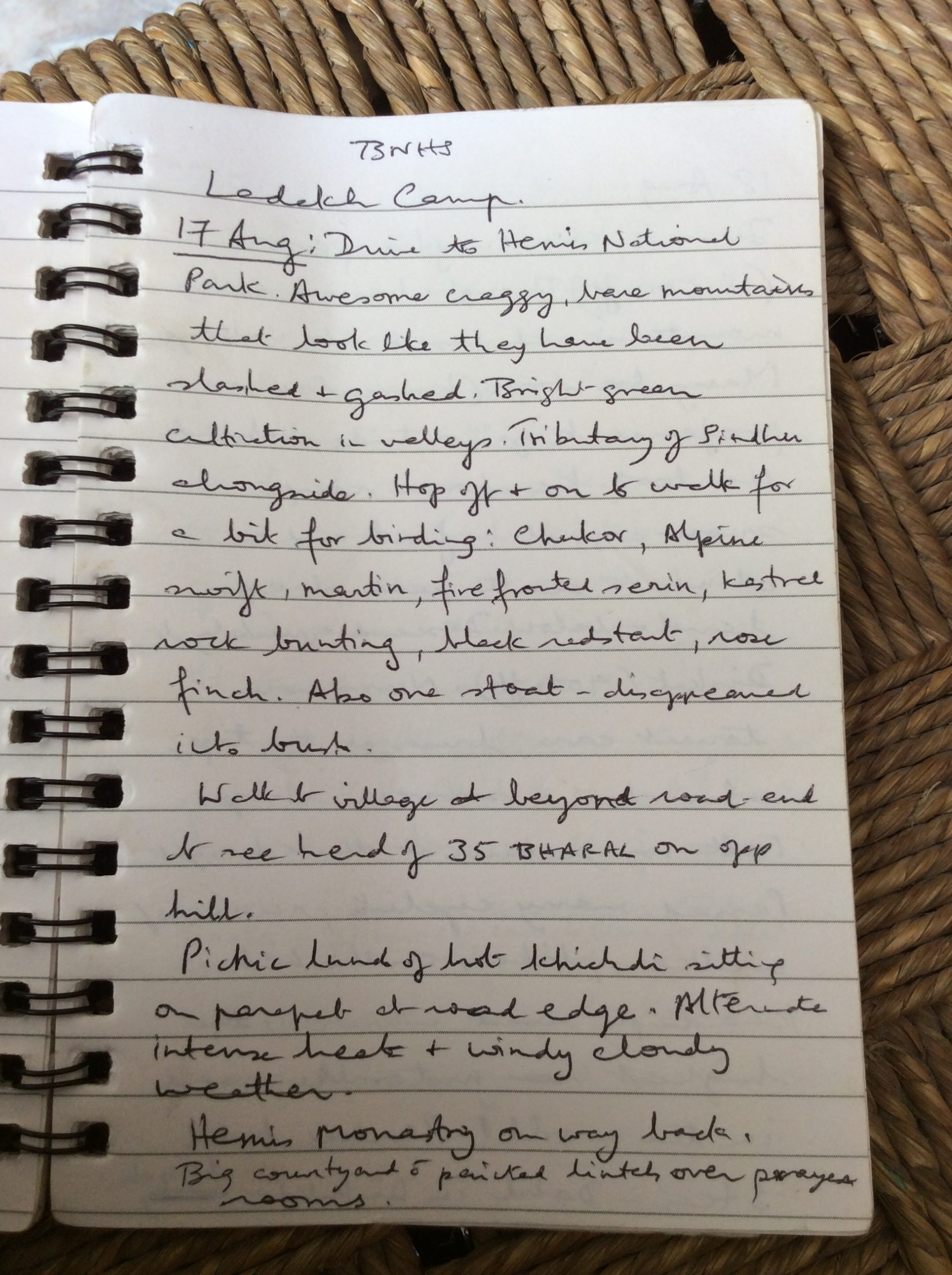
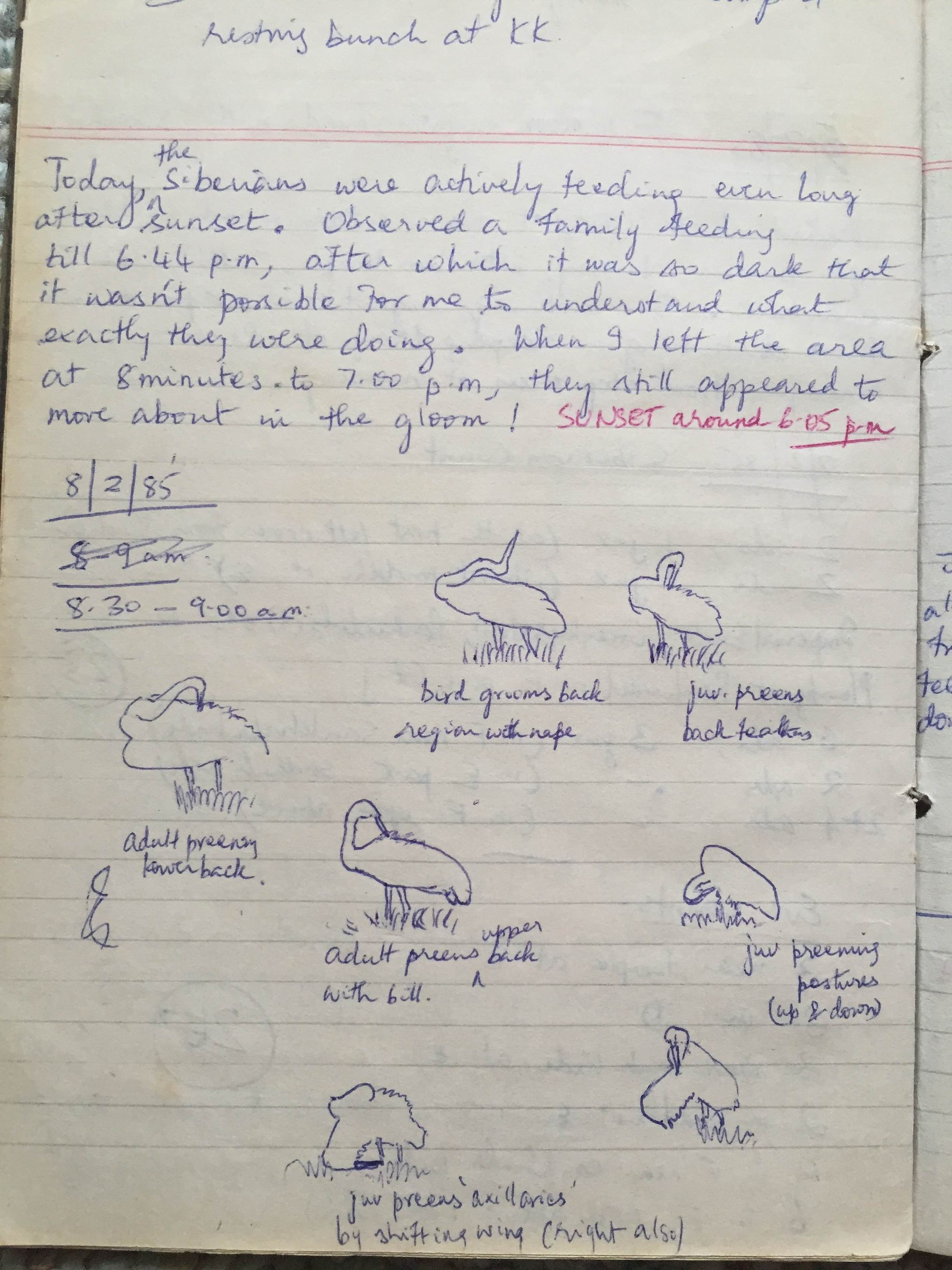
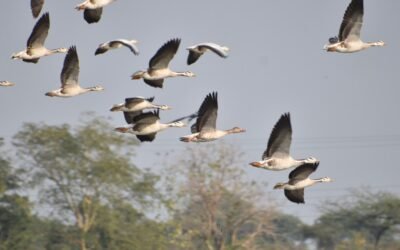
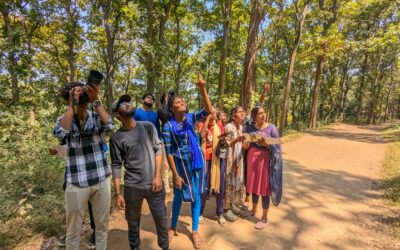

Most inspiring to know such contributions, hand-written as they are, authentic too. My congratulations to each persona. Will try to seek consent (from the organizer of this site) to use excerpts as an independent piece for the next http://www.econservationtimes.com — thanks, regards.